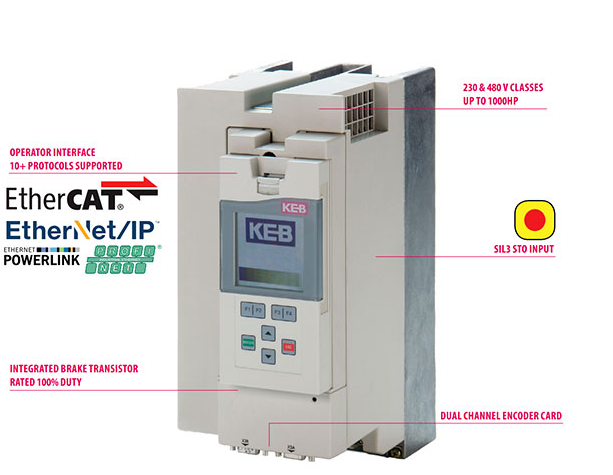Posted on 17th Nov 2023

The relationship between motor horsepower (HP), torque, and Variable Frequency Drive (VFD) frequency is an essential consideration when working with variable speed applications. CM Industry Supply Automation - KEB F5 Drive supplier share some key points to understand about this relationship:
In a motor, horsepower and torque are related by the following formula:
Horsepower (HP)=Torque (lb-ft)×Speed (RPM)5,252Horsepower (HP)=5,252Torque (lb-ft)×Speed (RPM)
This equation shows that horsepower is directly proportional to both torque and speed.
The speed of an AC induction motor is directly proportional to the frequency of the power supplied to it. The relationship is given by the equation:
Speed∝FrequencySpeed∝Frequency
When you decrease the frequency provided by the VFD, the motor speed decreases, and when you increase the frequency, the speed increases.
The torque produced by an AC motor is proportional to the square of the applied voltage and inversely proportional to the frequency. As the frequency decreases, the available torque from the motor decreases.
Torque∝Voltage2FrequencyTorque∝FrequencyVoltage2
When using a VFD to control motor speed, if you reduce the frequency without compensating with an increase in voltage, the torque capability of the motor decreases, and vice versa.
In many variable speed applications, it's desirable to maintain constant power. This means that as the speed decreases (by reducing frequency), the torque should increase to compensate and keep the power constant.
VFDs are designed to provide this capability through a process known as "flux vector control" or "field-oriented control," which adjusts both voltage and frequency to maintain constant power across a wide speed range.
When programming a VFD, it's important to consider the torque-speed characteristics of the motor and the specific requirements of the application. Some VFDs allow users to customize the torque-speed curve to match the needs of the driven load.
In summary, when using a KEB F5 Drive to control the speed of an AC induction motor, you need to consider the interplay between motor horsepower, torque, frequency, and voltage. VFDs are designed to provide flexibility in controlling motor speed while maintaining or adjusting torque to meet the demands of various applications. The specific programming and features of the VFD will play a crucial role in achieving the desired performance.